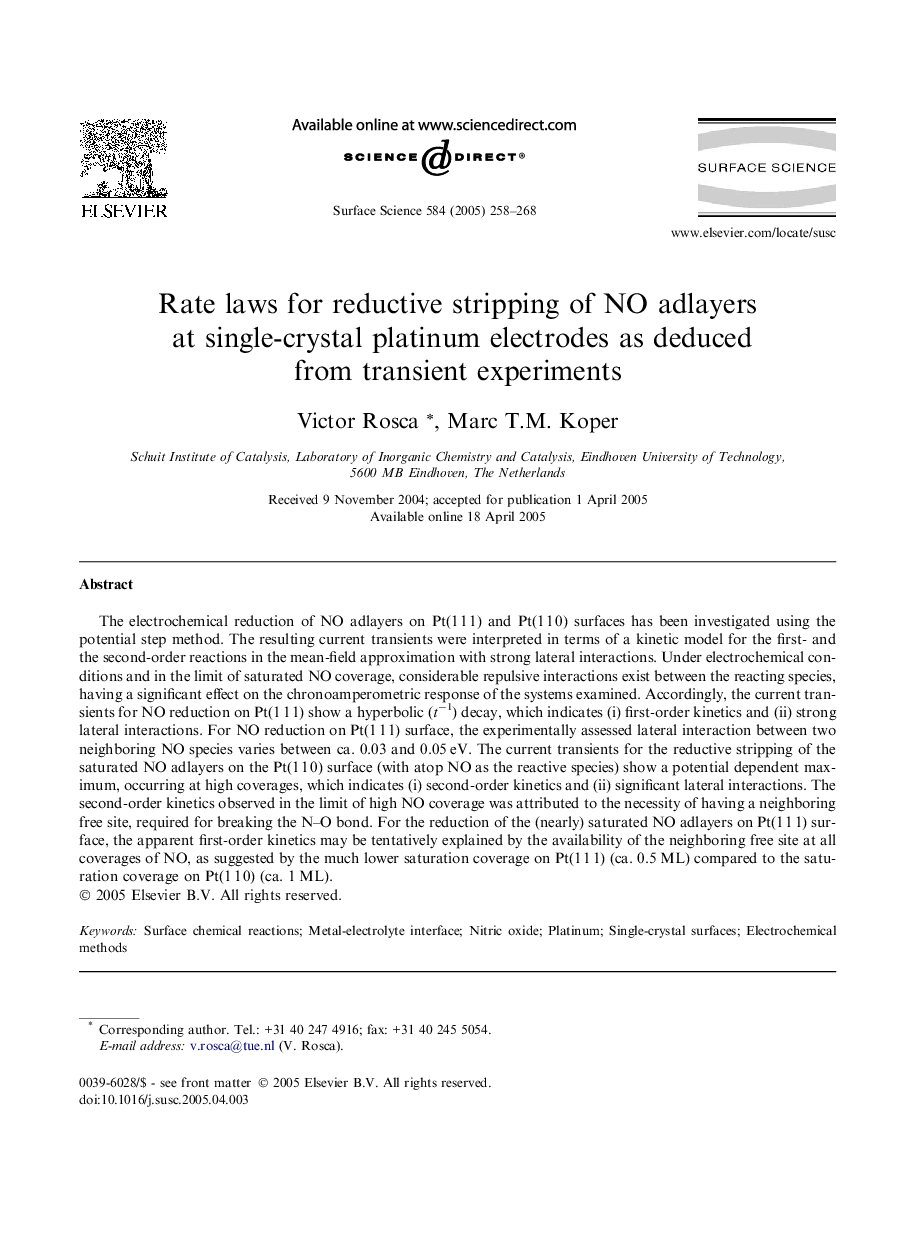| Article ID | Journal | Published Year | Pages | File Type |
|---|---|---|---|---|
| 9594670 | Surface Science | 2005 | 11 Pages |
Abstract
The electrochemical reduction of NO adlayers on Pt(1Â 1Â 1) and Pt(1Â 1Â 0) surfaces has been investigated using the potential step method. The resulting current transients were interpreted in terms of a kinetic model for the first- and the second-order reactions in the mean-field approximation with strong lateral interactions. Under electrochemical conditions and in the limit of saturated NO coverage, considerable repulsive interactions exist between the reacting species, having a significant effect on the chronoamperometric response of the systems examined. Accordingly, the current transients for NO reduction on Pt(1Â 1Â 1) show a hyperbolic (tâ1) decay, which indicates (i) first-order kinetics and (ii) strong lateral interactions. For NO reduction on Pt(1Â 1Â 1) surface, the experimentally assessed lateral interaction between two neighboring NO species varies between ca. 0.03 and 0.05Â eV. The current transients for the reductive stripping of the saturated NO adlayers on the Pt(1Â 1Â 0) surface (with atop NO as the reactive species) show a potential dependent maximum, occurring at high coverages, which indicates (i) second-order kinetics and (ii) significant lateral interactions. The second-order kinetics observed in the limit of high NO coverage was attributed to the necessity of having a neighboring free site, required for breaking the N-O bond. For the reduction of the (nearly) saturated NO adlayers on Pt(1Â 1Â 1) surface, the apparent first-order kinetics may be tentatively explained by the availability of the neighboring free site at all coverages of NO, as suggested by the much lower saturation coverage on Pt(1Â 1Â 1) (ca. 0.5Â ML) compared to the saturation coverage on Pt(1Â 1Â 0) (ca. 1Â ML).
Keywords
Related Topics
Physical Sciences and Engineering
Chemistry
Physical and Theoretical Chemistry
Authors
Victor Rosca, Marc T.M. Koper,
